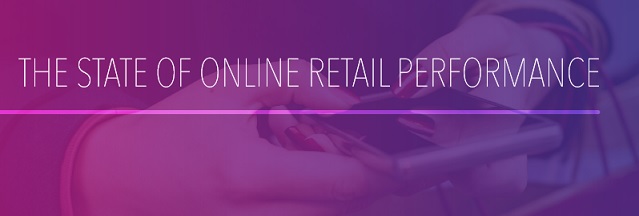
Optimizing online web performance is critical to keep and convert customers and achieve success for the holidays and the entire retail year. Akamai's The State of Online Retail Performance report lays out the challenges online retailers face.
Start with E-Commerce Secrets to Retail Holiday Success - Part 1

Mobile Users Bounce Around
As noted above, half of the online shoppers browse for products and services on their mobile devices. And of those, more than half are going to bounce. The stickiest consumers are on tablets, where the bounce rate averages 40.6 percent. Desktop users fall in the middle, with a 43 percent bounce rate. Unfortunately, losing up to half of your visitors is the harsh reality of online commerce. Consumers aren't patient, and they are only one back-button click from Google search results and competitors' websites.
A one-second delay can bump the bounce rate by almost 50 percent on mobile, and a two-second delay more than doubles it. Mobile users seem to be the most sensitive ones, but the impacts are similar with delays on desktop and tablet. If you are acquiring customers through search engine marketing campaigns, then these user bounce rates mean you not only missed the chance to show these customers your products, but you also paid a per-click price just to have the user leave the page before it even finished loading.
An efficient and effective strategy for minimizing bounce rate is to be visually complete as quickly as possible and load important page elements above the fold first. Once users can see and interact with the page, they assume the page is loaded even if other elements or third-party scripts are still loading in the background.
A start-render measurement is often the metric tracked here to demonstrate the point in time when something was displayed on the screen. A maximum start-render time of 0.9 seconds on desktop, 1.3 seconds on mobile, and 1.5 seconds on tablets corresponds to the lowest bounce rate on each device.
Third-Party Scripts
When it comes to providing a fast and seamless experience, less is often more. By reducing the number of page elements on a page and by utilizing the least amount of third-party scripts, one can provide the best page performance. But we also should keep in mind the entire customer experience. For example, we know that consumers convert at a higher level on personalized pages, and personalization usually requires third-party scripts. So, should one remove all third-party scripts and give consumers a Google like search page? Probably not. If third-party scripts are used to appropriately improve the customer experience and are loaded asynchronously, they can increase conversion.
Interestingly, the highest-converting desktop and tablet pages contained 20–25 third-party scripts, and the best-converting mobile pages contained 15–20. This is consistent with a joint machine learning project conducted by Akamai and Google which found that user sessions that converted contained 48 percent more scripts than sessions that did not.
That said, those scripts should be used judiciously and optimized well; simply throwing more scripts on the page will certainly not help conversion. Before adding elements to a page, retailers should always ask – what customer struggle point does this address or how does this improve the customer experience? If the answer to these questions is none, then perhaps that new element is not a priority item to add to the page.
Holiday Preparedness Starts Now
The Akamai study offers a lot of data to parse. But what is the real bottom line for online retailers?
Optimize for mobile — its influence on sales is only going to increase.
Monitor your site all the time to spot poorly-performing pages so you don't leave money on the table.
Run load tests before peak traffic times based on real user traffic patterns.
Prioritize customer experience and remove unnecessary third-party tags.
Implement a robust caching and content delivery strategy to ensure uptime and scalability.
Holiday shopping and promotion start earlier every year, so you can't wait until November 22. Start now, be thorough, and make it the best online year ever.
